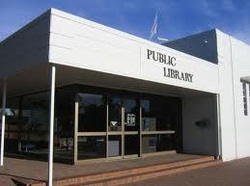Technology Assessment
Needs Statement
Introduction
We are in need of a new Integrated Library System. Our old system no longer meets our requirements and our ILS vendor has gone out of business. Our budget is very limited as our library district was unable to pass a mill levy in the last election cycle. So, cost is very much a concern. We recognize that the expectations, requirements, and possibilities of libraries are evolving at a blistering pace. Because of this rapid change, we are concerned with flexibility and interoperability; we would like our new system to freely cooperate with other software programs and be able to take on new tasks. Our avid sharing of resources with other library districts makes the ubiquitous use of standards within our ILS imperative. Library staff members are considering four Integrated Library Systems based on criteria for cost, support, usability, and software features. Normal 0 false false false EN-US X-NONE X-NONE MicrosoftInternetExplorer4 /* Style Definitions */ table.MsoNormalTable {mso-style-name:"Table Normal"; mso-tstyle-rowband-size:0; mso-tstyle-colband-size:0; mso-style-noshow:yes; mso-style-priority:99; mso-style-qformat:yes; mso-style-parent:""; mso-padding-alt:0in 5.4pt 0in 5.4pt; mso-para-margin:0in; mso-para-margin-bottom:.0001pt; mso-pagination:widow-orphan; font-size:10.0pt; font-family:"Calibri","sans-serif";} Naturally we need an ILS that can expedite manual practices, provide access to a variety of information in a variety of formats, provide internet connectivity, connect to local data, provide quick and powerful search options, allow for the creation of databases, and connect users to shared resources. A more detailed description of our needs can be seen below.
ILS System Needs Overview
• Bibliographic
The system must provide for display of all MARC content designators (field tags, subfield codes, indicators) on the cataloging workstation and suppress display of codes on all patron access workstations. We require record display that is compatible with the following clients: librarian/cataloger workstation, OPAC, Z39.50 client, and Web browser.
The system must support MARC 21 Format for Authority Data and allow all relevant bibliographic fields to be authority controlled. Describe how the system implements this format and identify which fields can be authority controlled. Describe the default authority control policies and the ability to customize these policies.
The system must support MARC 21 Format for Holdings Data at both summary and detailed levels, and as either embedded or linked records. Describe how the system supports this format. Discuss the ability of the system to automatically generate summary holdings. Discuss how the system is kept current with modifications to the holdings format.
The system must support holdings statements of both serial and non-serial multi-part items as defined in ANSI/NISO Z39.71 Holdings Statements for Bibliographic Items, including summary and detailed holdings, mixed level holdings, itemized and compressed formats, and enumeration and chronology displays.
The system must comply with the record structure specified in MARC 21 Specifications for Record Structure, Character Sets, and Exchange Media. In order to allow for the translation of codes and data into understandable, editable, and searchable information.
The system must support the importing, inputting, editing, displaying, printing, storing, and exporting of all characters defined in the character sets of MARC 21 Specifications for Record Structure, Character Sets, and Exchange Media.
The system must support the MARC 21 Specifications for Exchange Media with the capability to import and export, without vendor intervention, by FTP electronic transfer, disk, and tape.
The SICI standard defines a coding structure to assign unique identifiers to serials (called Serial Items) and articles within them (called Contributions). The code builds on the International Standard Serial Number (ISSN) for the serial item portion of the identifier. The SICI code is derived algorithmically from bibliographic information about the serial and/or article and may be generated by the creator/publisher of the items and contributions, by a third party vendor such as a document delivery supplier or abstracting and indexing service, or by the library which acquires and holds the materials. The system must support the use of the Serial Item and Contribution Identifier as specified in ANSI/NISO Z39.56.
• Circulation
We need a system that can support direct consortia borrowing, circulation interaction, self-service circulation (for possible, future use), and controlled access to e-books and audio files.
The system must support the use of both Codabar and Code 39 barcodes for bibliographic items and patron IDs, with the ability to interpret a minimum of 14 digits.
• Interlibrary loan
The system must conform to the Interlibrary Loan Protocol Implementors Group (IPIG) Profile in order to allow for the lending and borrowing of resources with other libraries in the consortia.
The system must support electronic document delivery.
• AV materials and equipment
The system must be able to manage the loaning out of AV materials and other electronic equipment to patrons.
• Booking
The ILS needs to be able to handle acquisitions, serials control, cataloging, OPAC functions, and external database access.
• Administrative
The ILS must be able to support word processing, spread sheets, payroll, general ledger, report generating, and scheduling functions.
• Information Requirements
The ILS must support the input and output of data, batches, Online interface, interfaces with other systems (The system must include a Z39.50 client and server that are compliant with ANSI/NISO Z39.50 version 3 for the assurance of interoperability with other servers.), and support our systems data files.
• Implementation Requirements
We require some basic support and the guaranteed availability of support in the event of a catastrophic problem. Some initial staff training is desired. We are also interested in a product that can be learned by staff over time through freely available online resources, either from the vendor or from other sources. We would like an ILS that has support available for the initial migration and implementation.
Source: http://www.niso.org/publications/press/RFP_Writers_Guide.pdf

